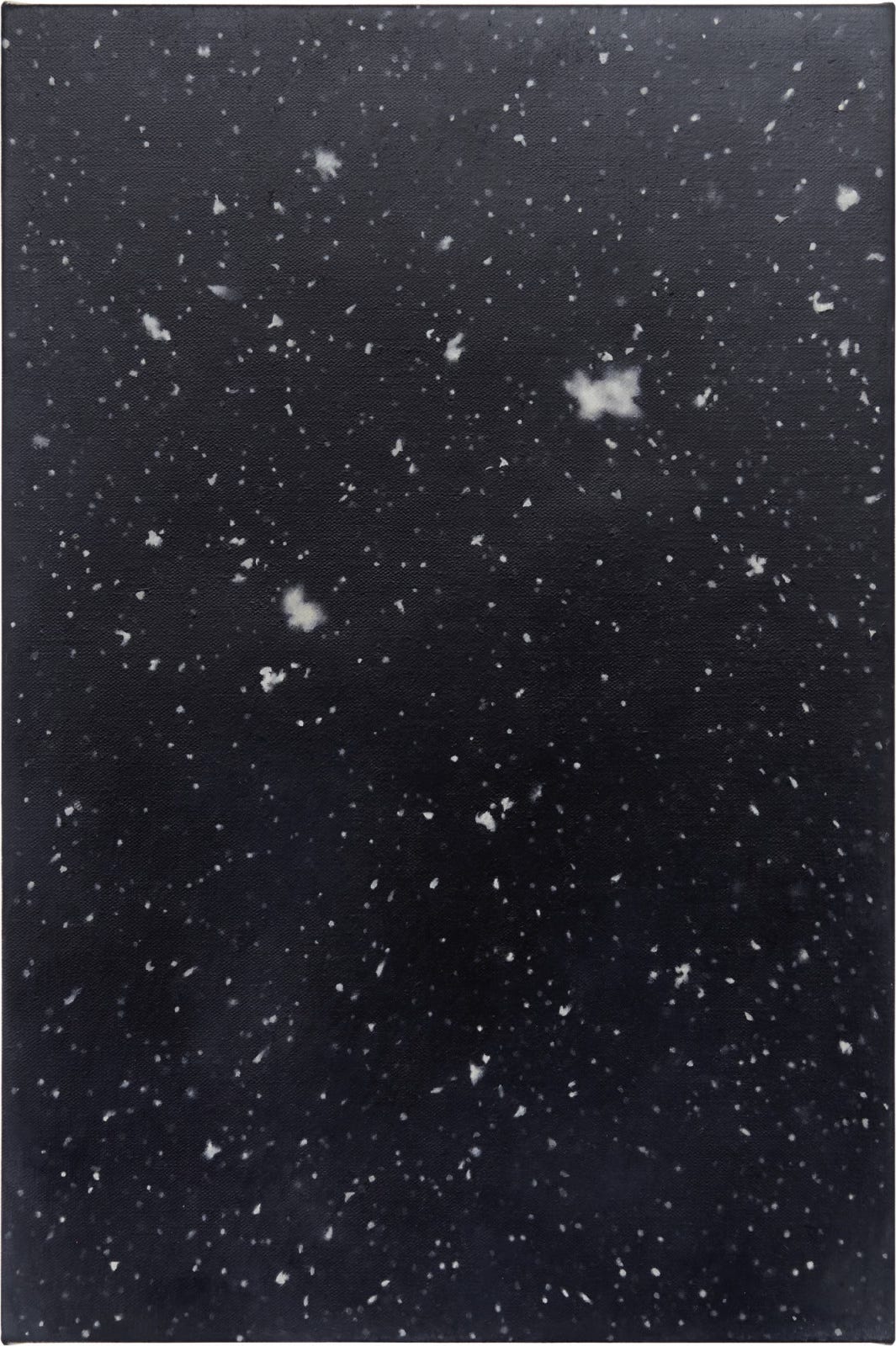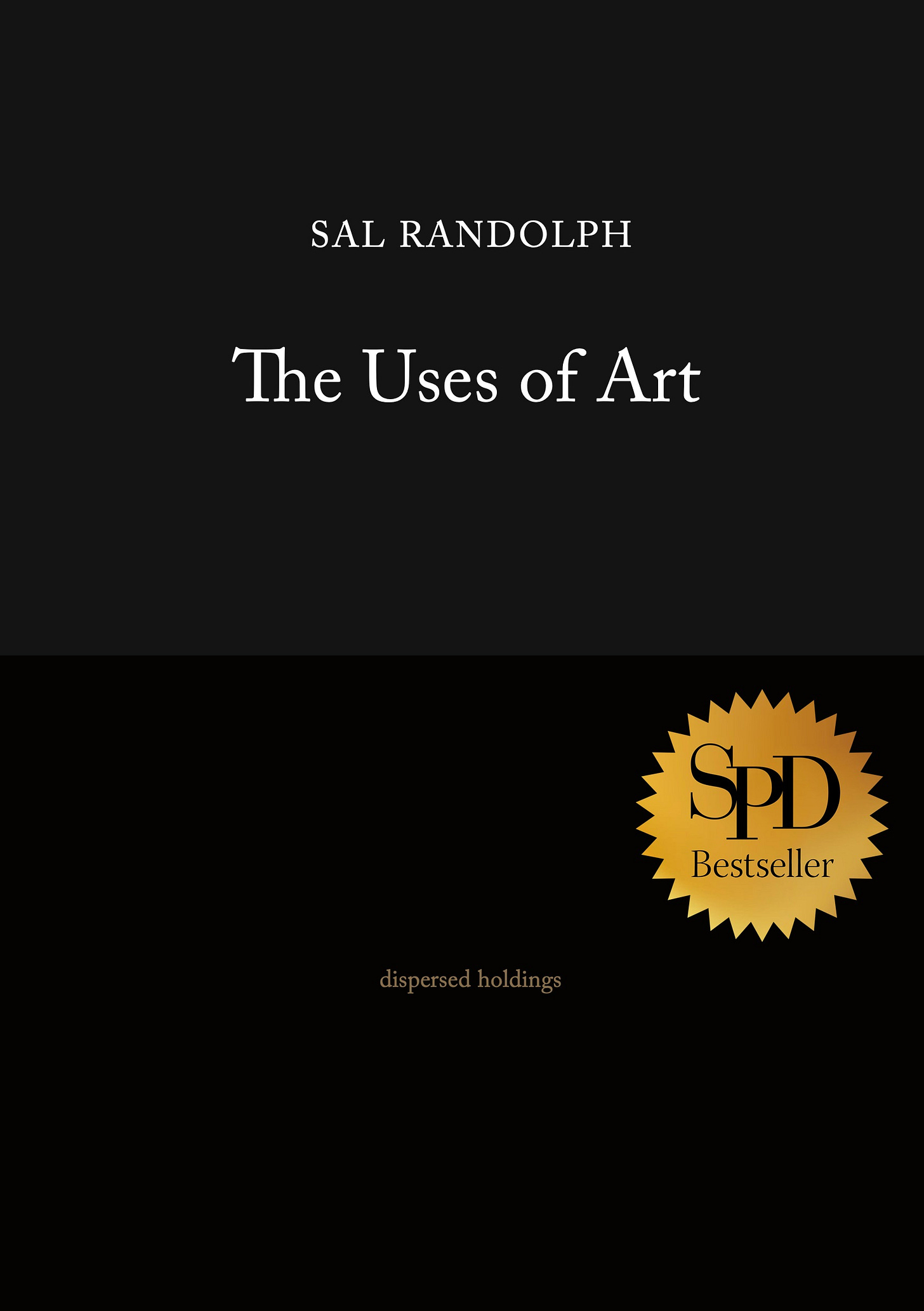
Dear Friends,
With the spring equinox, winter is receding. However, Winter — artist Vija Celmin’s exhibition at Matthew Marks Gallery in New York — will linger a bit longer, and that is a good thing. It has been a joy to spend time with these paintings on repeated visits, and also a joy to spend time with them in memory and imagination.
The show is up until April 6, and I hope you will see it if you can.
— Sal

Vija Celmins’s Winter
Vija Celmins (pronounced vee-yah sell-muns) is an artist almost universally loved, no matter what aesthetic affiliations a person otherwise has. She is known for drawings, prints, and paintings of ocean waves, star fields, desert floors, and moonscapes: works where the underlying image is derived from what we usually think of as the natural world. And yet, there is something uncanny about her works: they are depictions of photographs of these “natural” subjects. The original subjects are surfaces — allover fields dense with repeating and varying forms — and the photographs of these subjects are also surfaces. The final works are surfaces of surfaces of surfaces.
When I entered the gallery, the first small painting I saw seemed to be an astronomical view of stars, but as I got closer I saw that it was snow. I doubly mistook the piece: what I believed in that moment to be snow falling from a night sky turned out to be snow accumulating on a black coat. It’s a sly joke, very deadpan.
There are other moments of quiet comedy. Two sculptures mimic coils of sailor’s rope, one twisting upward to the ceiling, levitating like a rope trick. Another sculpture is a thin pole covered with thorns, a bronze casting of a long rose shoot. There are a pair of twin rocks: how could there be two? One is a rock, another a bronze replica, precisely painted to mimic the first. Only when you peer in very closely can you see that one is rock and the other an intricately painted surface.
I approach one of the rope pieces, an apparently simple coil, lying on a small pedestal as if it’s been left there. Is it giving off a little laugh, or am I? Then I look down on it from above and I find my eyes getting lost in its loops. My gaze turns and twists hypnotically. It begins in humor but but once it catches the eye its movements become inexhaustible; the potential for fascination is infinite.
Celmins’s works take a long time to make. The dates for the paintings in this show are given in spans of two to ten years. She returns and returns to the same paintings and to the same collection of images. She inhabits the time of making, dwells there, seemingly without impatience.
There are undulating waves of repetition in her way of working. Again and again to the same image, again and again to the same painting, again and again to the studio. Within all of these cycles is a sensation of timelessness, or is it a sensation of deep time? It is as if the paintings absorb time during the long process of making and later emit, give it off like an atmospheric cloud.

Snowfall (Blue)
I keep seeing Celmins’s painting Snowfall (Blue) floating in my mind. It’s a strange sensation to be in a painting’s presence even as the painting itself is absent. Surely I cannot remember it in complete detail. I have no idea, for instance, how many flakes of snow she represented. I can’t even say it’s the painting that I “liked best” in the show, but nevertheless it is the painting that represents my experience of being in the gallery.
It was a day of passing clouds and sun so the lighting in the space kept changing. Strangely, the paintings themselves seemed unaffected. Light fell in varying patterns on the walls and floors but the paintings lived in their own reality, within their own sense of illumination.
I pause in this writing to see anxious requests on my phone. I turn towards those demands as a plant turns to the sun, but I pull myself back. I come back to this space, this space with these paintings. This is a strange thing to say, because of course I am not physically with the paintings. They are a few blocks away, in the darkness of the after-hours gallery. I imagine a faint, ever-present city light glowing down from the skylights. I imagine a kind of hush even though the sounds of the city are never completely absent. I return to the space of these works with relief.
These works do not feel like a space of resistance, not a space of shielding or pushing away. The space they create is like a return to the self. It is like a breath coming in and out. Perhaps it is the time embodied in the paintings that I can breath in. The paintings offer a kind of temporal refuge.
It is as if they radiate something I have no exact words for. There is something like calm, yes, and something like the infinite possibility of looking. Each time I visited, I left the show lightened and suffused.
For me, the sensation of looking at these works is euphoric. Who knows, if I could look at them longer, dwell with them the way I wish I could, how euphoric the sensation of time might become.

Vija Celmins
Vija Celmins Winter is on view at Matthew Marks through April 6, 2024.
Vija Celmins in TateShots:
Trailer for the documentary Vija Celmins: To Fix the Image in Memory.
Further adventures and new ways of seeing can be found in my book, The Uses of Art.
Artist Sal Randolph’s THE USES OF ART is a memoir of transformative encounters with works of art, inviting readers into new methods of looking that are both liberating and emboldening.
Dazzlingly original, ferociously intelligent.
— Michael Cunningham
A joyful, dazzling treasure-box of a book.
— Bonnie Friedman
Here’s a guide, to waking up, over and over again.
— Roshi Pat Enkyo O’Hara






i love Vija Celmins ❤️ i show her work when I’m teaching observational draeing to university students and interestingly it’s always so divisive - some really, really love and others can’t stand it. it’s like a litmus test of personality lol